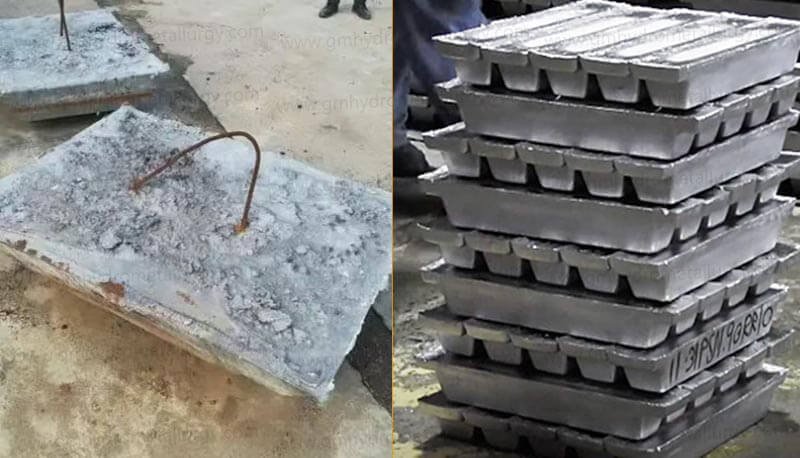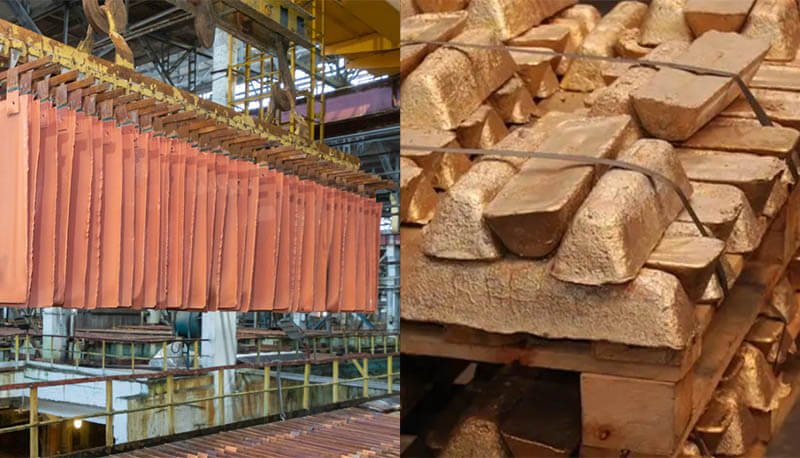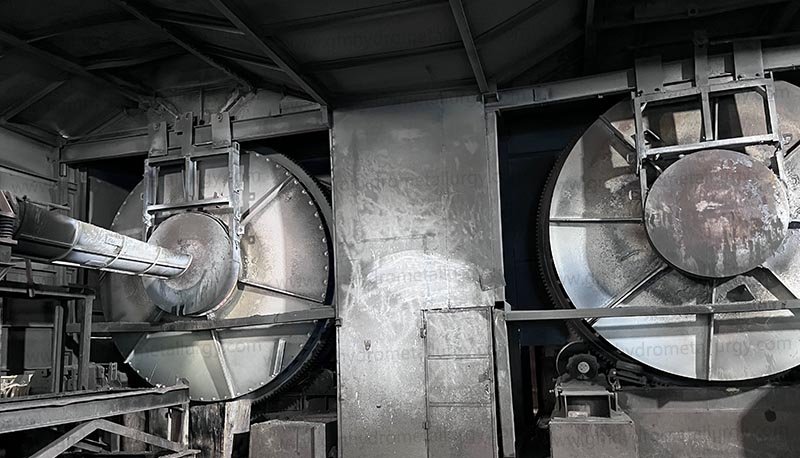Gold Electrorefining Process
The is a critical method for enhancing the purity of gold, primarily by extracting gold from a gold-containing solution through electrochemical reactions.
Below are the detailed steps and key points of this process:
1. Raw Material Preparation and Anode Casting
Raw material: Generally, crude gold with a gold content of over 90% is required.
Anode casting: Crude gold is alloyed with substances like saltpeter and borax before being melted and cast into anodes, or crude gold may be directly melted and cast into coarse gold anode plates.
2. Selection of Cathode and Electrolyte
Cathode: Typically made from materials with good electrical conductivity, such as pure gold sheets or stainless steel plates.
Electrolyte: Usually consists of an aqueous solution of gold chloride complexes and free hydrochloric acid; in some cases, cyanide solutions are used. The concentration and composition of the electrolyte need to be adjusted according to the nature of the ore and the refining requirements.
3. Electrolytic Cell Setup
The electrolytic cell is the core equipment for electrorefining, and its design significantly impacts electrolysis efficiency. Electrolytic cells are commonly constructed from corrosion-resistant materials, such as acid-resistant ceramic tanks or square tanks welded from plastic sheets, with protective outer tanks to prevent leakage of the electrolyte. Inside the electrolytic cell, cathodes and anodes are placed and connected to a direct current power source to perform electrolysis.
4. Electrolysis Process
Upon electrification, gold ions are reduced to metallic gold at the cathode, gradually depositing on the cathode surface.
At the anode, oxidation reactions occur, dissolving impurities such as silver and copper. It’s important to note that high silver content can lead to the formation of silver chloride adhering to the anode surface, causing anode passivation; thus, alternating current might sometimes be applied simultaneously to mitigate the impact of silver.
5. Post-Refinement Treatment
After electrolysis, the cathode is removed, and the deposited metallic gold is scraped off.
The obtained metallic gold requires further processing, such as acid washing or fire refining, to remove residual impurities, ultimately achieving high-purity metallic gold (with a purity typically exceeding 99.99%).
In summary, the gold electrorefining process achieves the transformation from crude gold to high-purity metallic gold through a series of meticulous steps and strict condition controls. This process boasts advantages such as stability, ease of control, minimal pollution, and low labor intensity, making it an essential technology in gold mining refinement.






